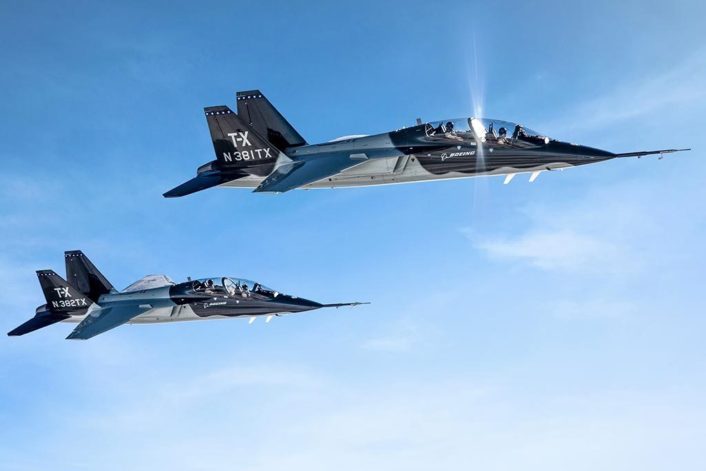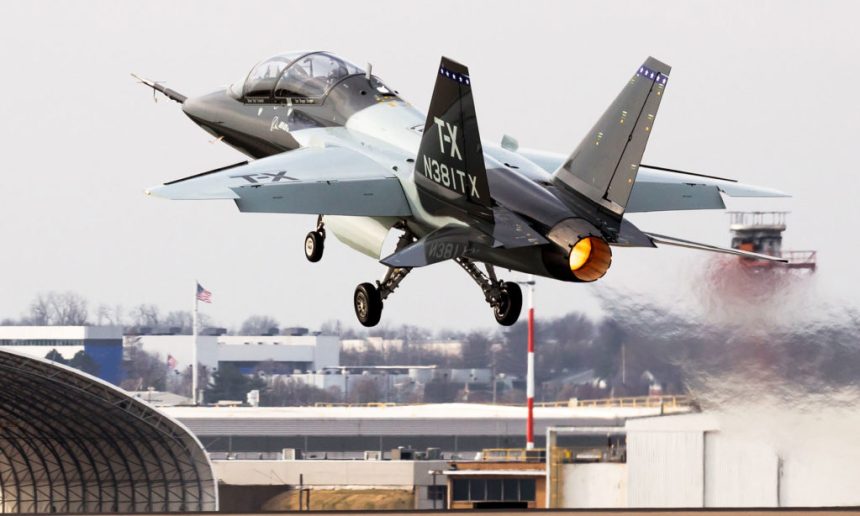The jet resumed flight operations after the last test flights in December 2018
On July 1, 2019, Boeing announced that T-X aircraft N381TX flew the first official Engineering and Manufacturing Development (EMD) flight test from Boeing’s St Louis plant in Missouri. Boeing did not disclose further details about this flight although the Chief T-X Test Pilot, Steve ‘Bull’ Schmidt, said: “She flew just superb. First EMD test points went off without a hitch”.
The aircraft is one of the two company-funded prototypes built for the Air Force T-X Advanced Pilot Training program and modified into the EMD design after the first flight test campaign. The two aircraft performed 72 test flights between December 2016 and December 2018, gathering data ahead of the EMD testing. During the last months, Boeing and Saab (rear fuselage supplier for T-X) modified the prototypes with ACES 5 ejection seat, an updated On-Board Oxygen Generation System (OBOGS) and other minor changes. Boeing is counting on completing the critical design review of the final EMD configuration by the end of 2019.

The U.S. Air Force awarded the $ 9.2 billion T-X contract to Boeing and Saab in September 2018 for 350 trainer aircraft, 46 ground-based training systems and related ground equipment, with other 125 aircraft on option.
The first five aircraft and seven simulators will be delivered to Joint Base San Antonio-Randolph (Texas) in 2023, with Initial Operational Capability (IOC) planned by the end of 2024 and Full Operational Capability (FOC) planned by 2034. The T-X trainer is due to replace the Northrop T-38 Talon, the world’s first supersonic and most produced jet trainer, that has been in service for over 50 years.
The new aircraft is powered by a single General Electric Aviation F404 engine (the same engine used by the Saab Gripen C/D and legacy F/A-18) and has a design similar to the F/A-18, with leading-edge root extensions (LERX) and twin tails that can provide high performance training for pilots that will fly US front-line fighters. The cockpit features a touchscreen large-area display (LAD), digital Up-Front Controller (UFC) and standby instruments, Hands On Throttle And Stick (HOTAS) controls and a low profile Head-Up Display (HUD), much like the F-35 cockpit or the proposed cockpits for Boeing’s F/A-18E/F Block III and F-15X and Saab’s Gripen E.









